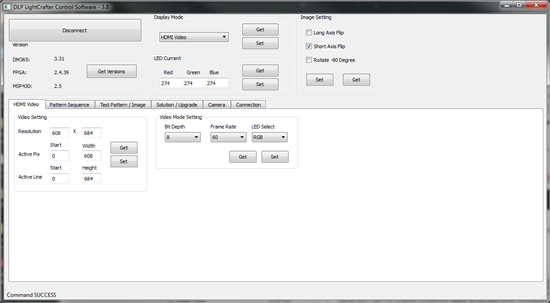Hello E2E Community,
I have an LCr 2.0 and I am trying to get it to work with HDMI input. Whenever I connect an active HDMI source, whatever image is on the LCr disappears and a high-pitched whine comes from the LCr. The splash screen will flash every 10 seconds or so. I've tried using my Macbook's DVI out, my Raspberry Pi, and my Apple TV (these are the only HDMI devices I have). If I reset the LCr with an HDMI source plugged in, as soon as the boot finishes, the same thing happens with the blank screen and whine.
Any and all help is appreciated, thanks.
-Nikita


